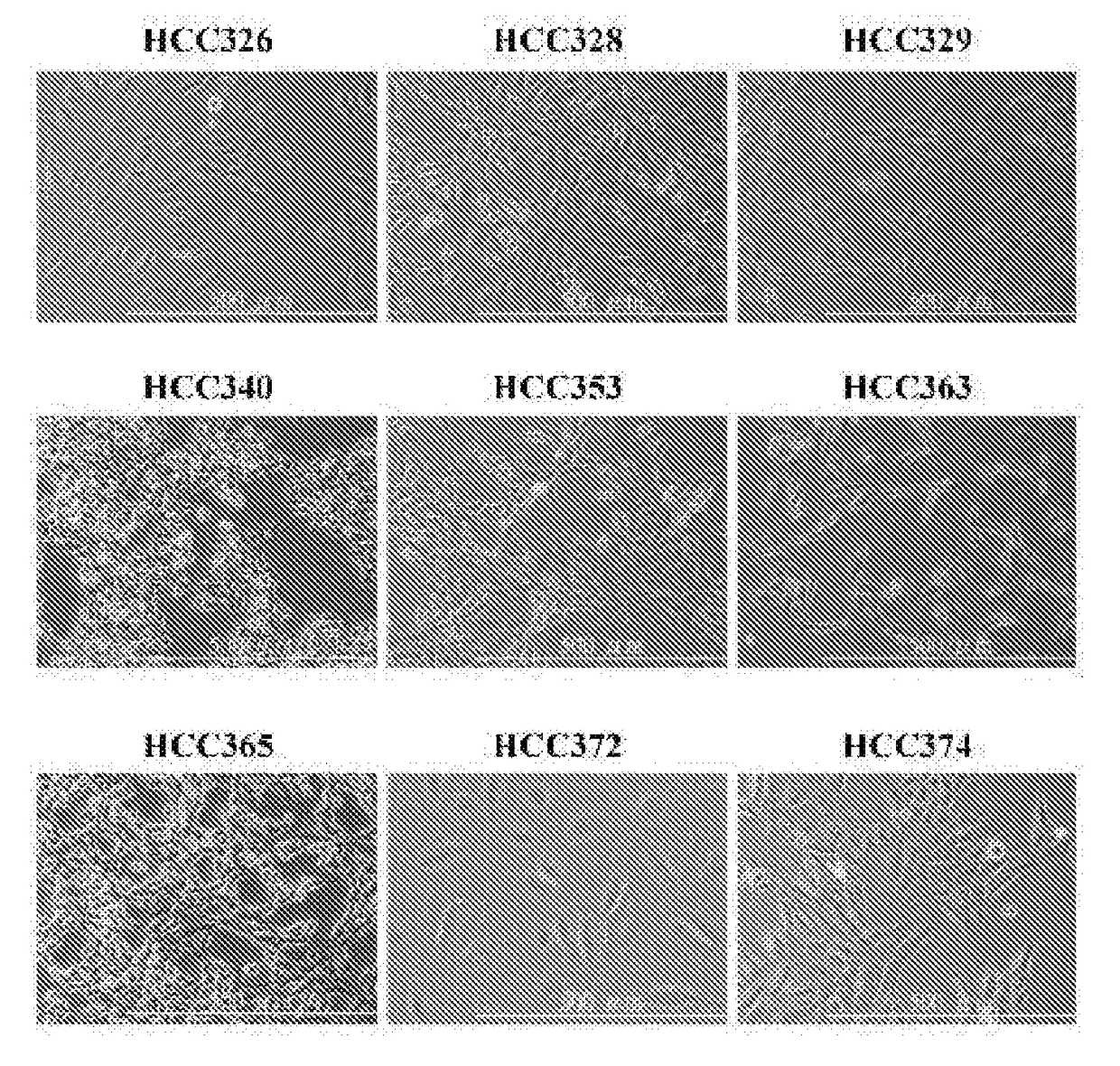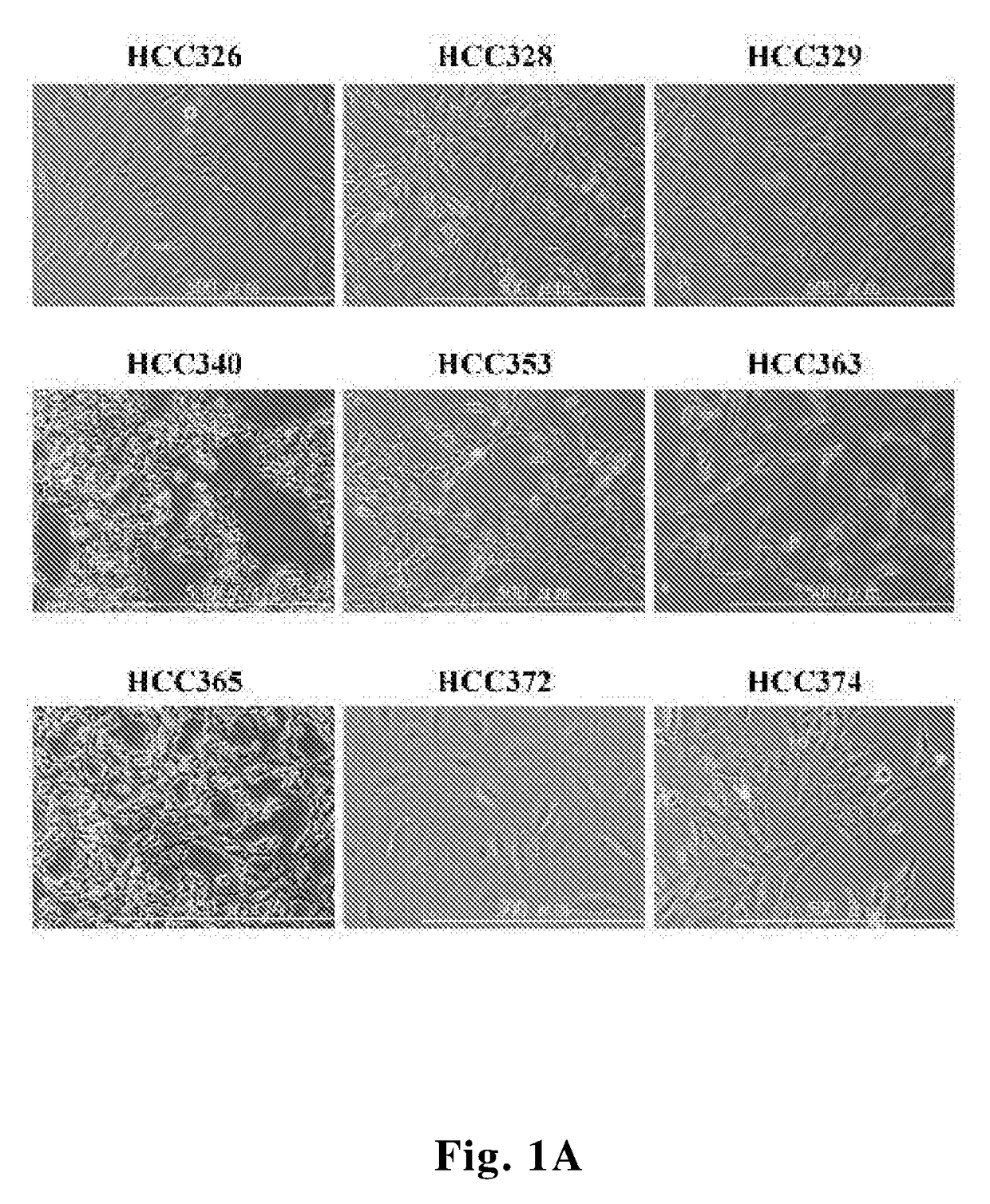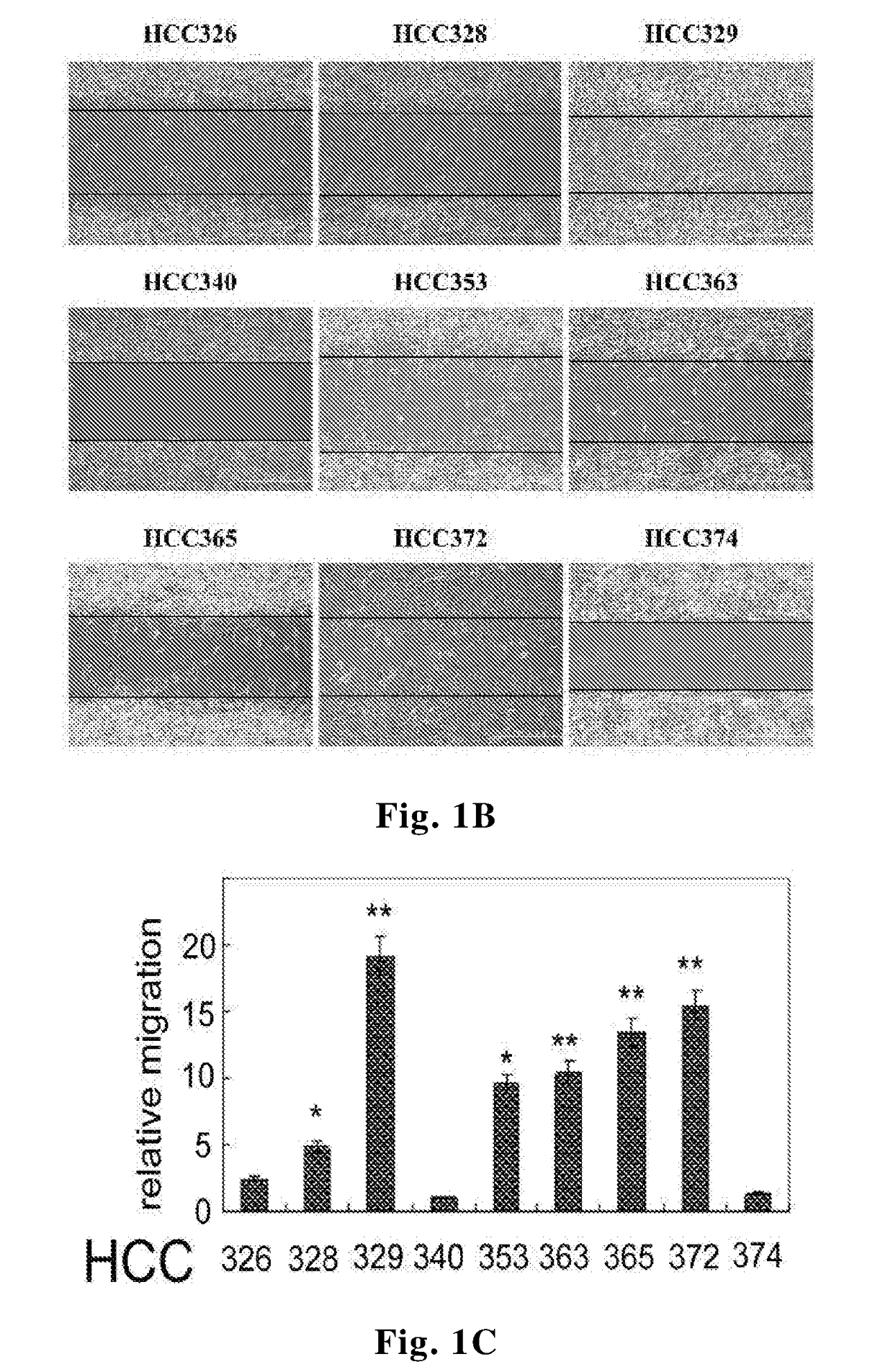Methods and compositions for treating c-met associated cancers
a technology of c-met and associated cancers, applied in the field of fungal immunomodulatory proteins (fip), can solve the problems of significant liver and bone marrow toxicity and their anticancer activity, and achieve the effect of not being investigated
- Summary
- Abstract
- Description
- Claims
- Application Information
AI Technical Summary
Benefits of technology
Problems solved by technology
Method used
Image
Examples
example 1
ment of Patient-Derived HCC for Preclinical Trial of FIP-gts
[0072]Clinically derived HCC cell lines were established from parts of HCC tissues obtained from surgery with patient's consents and approved by Buddhist Tzu Chi General Hospital Research Ethic Committee (IRB 101-62). Briefly, HCC tissues were pretreated with collagenase followed by selection of HCC cell lines on mitomycin-treated NIH3T3 feeder layer for 4-6 passages. Homogenous HCC cell populations were obtained and tested for their sustained proliferation ability (over 20 passages) and metastatic potentials both in vitro and in vivo. The characteristics of the HCC tumor cell lines were validated by detecting the HCC tumor makers such as Glypican 3 (GCP3) after over 40 passages.
[0073]Patient-derived HCC cell lines were established and their phenotypes were characterized. Morphology of 9 HCCs (denoted as HCC329, 328, 326 and 340, 353, 365, 363, 372, 274, respectively) were demonstrated (FIG. 1A). Some of the cell lines (HCC...
example 2
ling Migration Assay
[0074]The HCC cells were cultivated on 24-well plates accompanied with a wound healing culture insert until confluence followed by serum starvation of the cells for 24 hours and the culture insert were then removed. After appropriate treatments, pictures were taken under a phase contrast microscope at indicated times. Quantitative analysis of motility of the HCC cell lines described in Example 1 was performed by directly counting the cells migrating into the blanking area at 48 hours using Image J. Software available from the NIH website. The results were shown in FIG. 1B. In general, motilities of the mesenchymal HCCs were higher than those of the epithelial ones. Among them, the mesenchymal phenotype HCC329 and HCC372 exhibited the highest motility, and the epithelial type HCC340 and HCC374 exhibited the lowest motility (FIG. 1C).
example 3
Signaling in Patient-Derived HCCs
[0075]The status of critical signaling components involved in tumor progression of HCCs, including c-Met, ERK, JNK and AKT, were further examined in the patient derived cell lines established in Example 1 and the conventional HCC cell line HepG2. Total proteins were harvested from the cells and subjected to immuno-blotting analysis using GAPDH as a loading control. Antibodies for p-c-Met, p-JNK, p-ERK and p-paxillin (S178), GAPDH and ERK were purchased from Santa Cruz Biotechnology (California, USA). The band intensities on the blots were quantified with Image J. Software. The results shown in FIG. 2 were representative of 2 reproducible experiments.
[0076]As demonstrated in FIG. 2, c-Met (β subunit with M.W. 140 kD) was highly expressed in HCC 372, 340 and HepG2, slightly detected in HCC374 but not observed in the other cell lines. It was known that c-Met dimerization activates the phosphorylation of tyrosine residues (Tyr1234) in the kinase domain, ...
PUM
| Property | Measurement | Unit |
|---|---|---|
| secondary structure | aaaaa | aaaaa |
| morphology | aaaaa | aaaaa |
| phase contrast microscopy | aaaaa | aaaaa |
Abstract
Description
Claims
Application Information
 Login to View More
Login to View More - R&D
- Intellectual Property
- Life Sciences
- Materials
- Tech Scout
- Unparalleled Data Quality
- Higher Quality Content
- 60% Fewer Hallucinations
Browse by: Latest US Patents, China's latest patents, Technical Efficacy Thesaurus, Application Domain, Technology Topic, Popular Technical Reports.
© 2025 PatSnap. All rights reserved.Legal|Privacy policy|Modern Slavery Act Transparency Statement|Sitemap|About US| Contact US: help@patsnap.com



